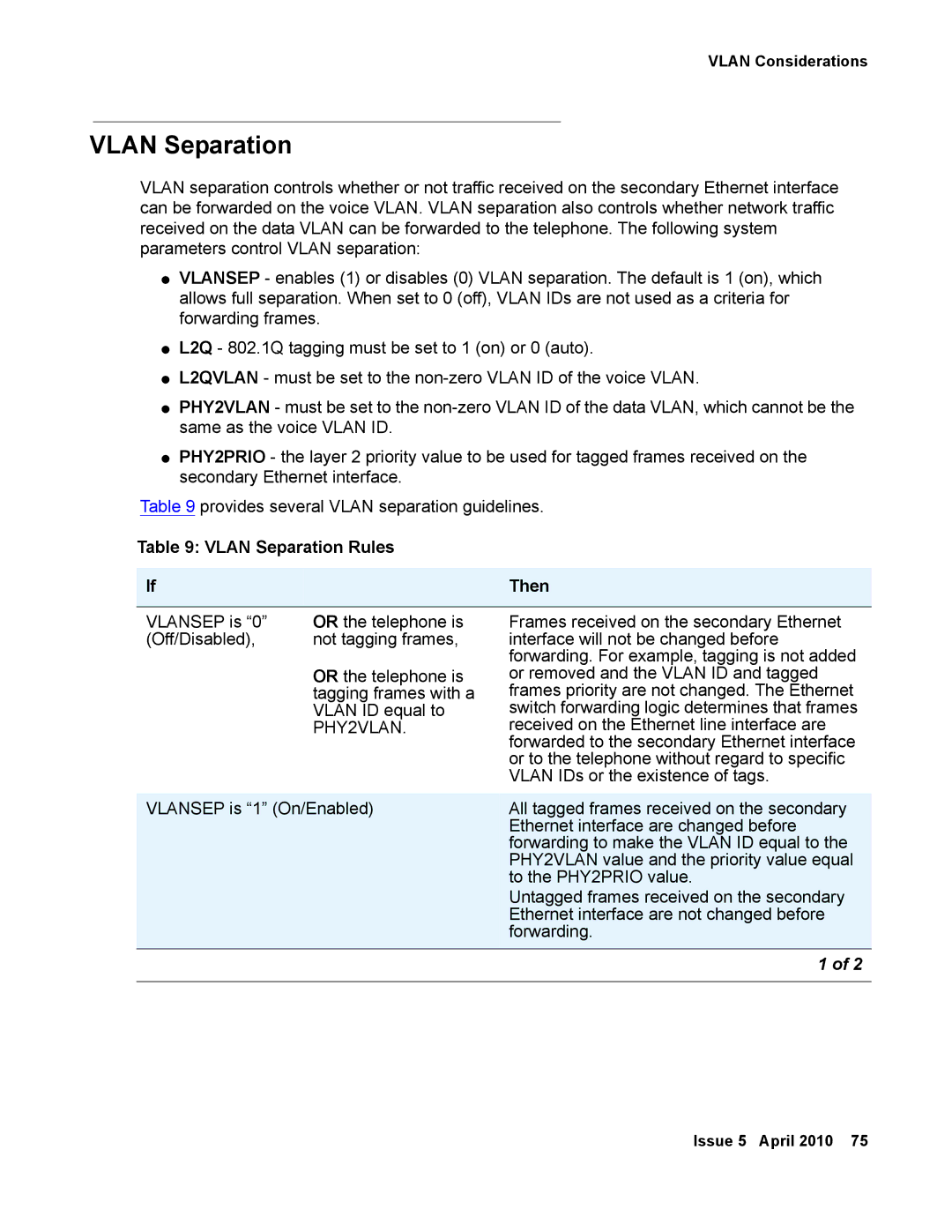
VLAN Considerations
VLAN Separation
VLAN separation controls whether or not traffic received on the secondary Ethernet interface can be forwarded on the voice VLAN. VLAN separation also controls whether network traffic received on the data VLAN can be forwarded to the telephone. The following system parameters control VLAN separation:
●VLANSEP - enables (1) or disables (0) VLAN separation. The default is 1 (on), which allows full separation. When set to 0 (off), VLAN IDs are not used as a criteria for forwarding frames.
●L2Q - 802.1Q tagging must be set to 1 (on) or 0 (auto).
●L2QVLAN - must be set to the
●PHY2VLAN - must be set to the
●PHY2PRIO - the layer 2 priority value to be used for tagged frames received on the secondary Ethernet interface.
Table 9 provides several VLAN separation guidelines.
Table 9: VLAN Separation Rules
If |
| Then |
|
|
|
VLANSEP is “0” | OR the telephone is | Frames received on the secondary Ethernet |
(Off/Disabled), | not tagging frames, | interface will not be changed before |
|
| forwarding. For example, tagging is not added |
| OR the telephone is | or removed and the VLAN ID and tagged |
| tagging frames with a | frames priority are not changed. The Ethernet |
| VLAN ID equal to | switch forwarding logic determines that frames |
| PHY2VLAN. | received on the Ethernet line interface are |
|
| forwarded to the secondary Ethernet interface |
|
| or to the telephone without regard to specific |
|
| VLAN IDs or the existence of tags. |
VLANSEP is “1” (On/Enabled) | All tagged frames received on the secondary | |
|
| Ethernet interface are changed before |
|
| forwarding to make the VLAN ID equal to the |
PHY2VLAN value and the priority value equal to the PHY2PRIO value.
Untagged frames received on the secondary Ethernet interface are not changed before forwarding.
1 of 2
Issue 5 April 2010 75
